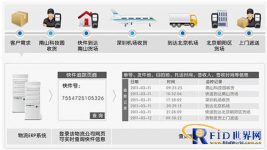
Internet of Things handheld terminal PDA power inspection system
[ad_1]
The composition of the inspection system
The mobile inspection system is divided into two parts:
Client: The client is installed onFourierCM380 on
Server side: The server side is installed on the PC
work process
1. Preparation
According to the needs of the inspection work, arrange the inspection work on the PC, and plan the inspection line, work content and key points. And download all work-related information to Fuliye.
2. Arrive at work point
FourierCM380 is arranged according to the work content, combined with GIS map information, and uses the GPS system to guide the staff to the work point.
3. Carry out a certain point of work
After reaching a certain point, the work form on the handheld computer can be opened to perform inspection and data collection.
Collecting work (if it does not reach a specific range, it is impossible to record and collect data)
4. The next point of work to complete the task
5. Upload the data to the background server
After the staff returns to the office, they upload the data to the PC and transfer it to the back-end server via the network.
6. Feedback
The back-end server will process the feedback information and notify the staff as the basis for solving the problem and the next work.Function description
Function description
Client function
1) Query equipment attributes: Users can query the detailed attributes of the equipment according to the line name and tower number.
2) Confirm user identity: The user needs to enter the login password to confirm the user identity.
3) Download user inspection tasks: download user inspection tasks and related materials from the server according to the user’s login identity in the system.
4) Provide equipment optional defect code: according to the current inspection of different equipment to give the corresponding common defect code, the user
Just select the code, and the corresponding defect can be recorded in the database.
5) Handwritten record defects: For special defects, the system provides handwritten records as an auxiliary means.
6) Supervision in place: Using the global positioning system, you can reliably confirm whether the user is in place.
7) Configuration management: Provide administrators with access to the management system. For example, update user information, add new device information, etc.
2. Server-side functions
The server side is mainly used to connect to the database, manage data, modify the password, and complete the server and Fuliye CM380
The data upload/download between them can satisfy any computer on the local area network with the system to query and analyze the data of the line patrol business.
1) Line patrol business management: formulate line patrol plans, develop corresponding line patrol plans for different users, and generate corresponding equipment data.
2) Write back the completion of the line inspection task: upload the user’s current inspection result to the server database.
3) In-place inspection supervision statistics: According to the pole tower coordinates and inspection coordinates, inspection time, statistics of inspection in place.
4) Defect management: check the defect status of the line. Including new defect records, defect elimination situation.
5) Data download: According to different line patrol personnel, download the line patrol plan of this person and the related line, tower attributes, defect situation and other data of this plan to Fu Liye CM380.
6) Data upload: willFourierThe data on the CM380 is uploaded to the server, including the completion status of the line inspection, the defect status,
GPS path etc.
Features
High degree of system integration
Customizable hardware platform
Open software platform
High reliability of the system
High-performance embedded GPS
High sensitivity GPS antenna
Reliable power solution
Large-capacity data storage
Handwriting input and shortcut keys
Fast and diverse external interface
Rich business assistant functions

[ad_2]



